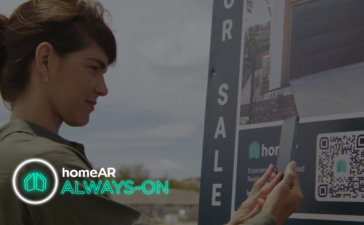How VR and 3D Visualization Services Are Changing Construction Industry
Sponsored content
Sponsored by OmegaRender
The construction industry is one of the industries adapting slowly to new technologies to increase productivity and deliver projects. However, the construction industry is now embracing and adapting to new technologies like virtual reality for 3D rendering services. Here, you will discover everything you need to know about how VR and 3D visualization services are changing the construction industry.
Uses of VR and 3D Visualization Services in the Construction Industry
The construction industry is extensively employing building information modeling (BIM) and computer-aided design (CAD) software for design and construction processes, and they can also work well with VR. When VR is combined with BIM and CAD for 3D architectural visualization services, it becomes possible to visualize and walk through a project as though it was completed.
Furthermore, it becomes easier to identify design errors and make changes before construction begins. This explains why clients now prefer to work with a 3D architectural rendering company to save money and time. VR is growing in relevance in the construction industry, and here are some of the ways VR and 3D visualization services are changing the industry.
Design
3D architectural rendering services produce renderings of a structure to showcase interior and exterior designs even to the finest detail. Furthermore, 3D renderings, visualizations, and animations make it possible to walk through a building as though you are physically present. Besides, it becomes easier to communicate ideas among a design team and to clients or stakeholders.
However, 3D renderings, visualizations, and animations provide little interactivity with the features of a structure because you can only see but not touch. Conversely, VR adds that touch of interactivity and fine details to 3D architectural visualization services. Thus, a viewer can carry out tasks like switching on the light and opening a door, among others.
Renovation
VR technology has made the renovation of structures easier. For instance, the technology can create a digital version of an existing building regardless of when it was built. The digital version is what a 3D architectural rendering company works on for remodeling before actual renovation work begins.
When a person that wants to renovate a building approaches an architect, the architect makes a virtual representation of the remodeled building. VR is then used to visualize and interact with the building to see if the new features meet the house owner’s requirements and fit well into the house.
Project Completion and Delivery
Construction projects need to be completed on time to avoid extra expenses. Generally, large projects take more time to complete than small projects. However, even a small project can take more time to complete than a relatively large project because of delays caused by errors or minor issues. Thus, professionals in the construction industry must adapt to situations to avoid delays on projects as much as possible.
VR technology helps to spot activities or tasks that can delay a project early. Furthermore, it can help to come up with different solutions to errors and challenges and choose the best solution. Thus, VR and 3D architectural visualization services are helping to fast-track project completion and delivery.
Safety and Training
Because of the risks and accidents associated with the construction site environment, there may be better ideas to train personnel on site. Therefore, training on safety and equipment use can be done off-site with VR and 3D architectural rendering services.
For instance, a heavy equipment operator can be put through a refresher training in the virtual world on how to operate a piece of equipment and safeguard himself and his environment while working in the real world.
Marketing
VR and 3D architectural visualization services are great for marketing because they help you create attractive marketing campaigns and materials, especially for real estate. Potential property buyers can easily interact and inspect a building through 3D walkthrough animations without stepping foot in the building.
Furthermore, photorealistic representations and walkthrough animations can be used to get clients’ feedback to improve a structure before and during construction.
Conclusion
The construction industry is increasingly adapting innovative and disruptive technologies such as VR and 3D visualization services. Furthermore, VR is becoming a standard tool that aids communication among all parties on a project.
Therefore every professional and stakeholder in the architecture, engineering, and construction (AEC) industry must partner with a 3D architectural company to help use VR and other innovative technologies to meet the demands of productivity and project delivery.
How VR and 3D Visualization Services Are Changing Construction Industry Read More »



